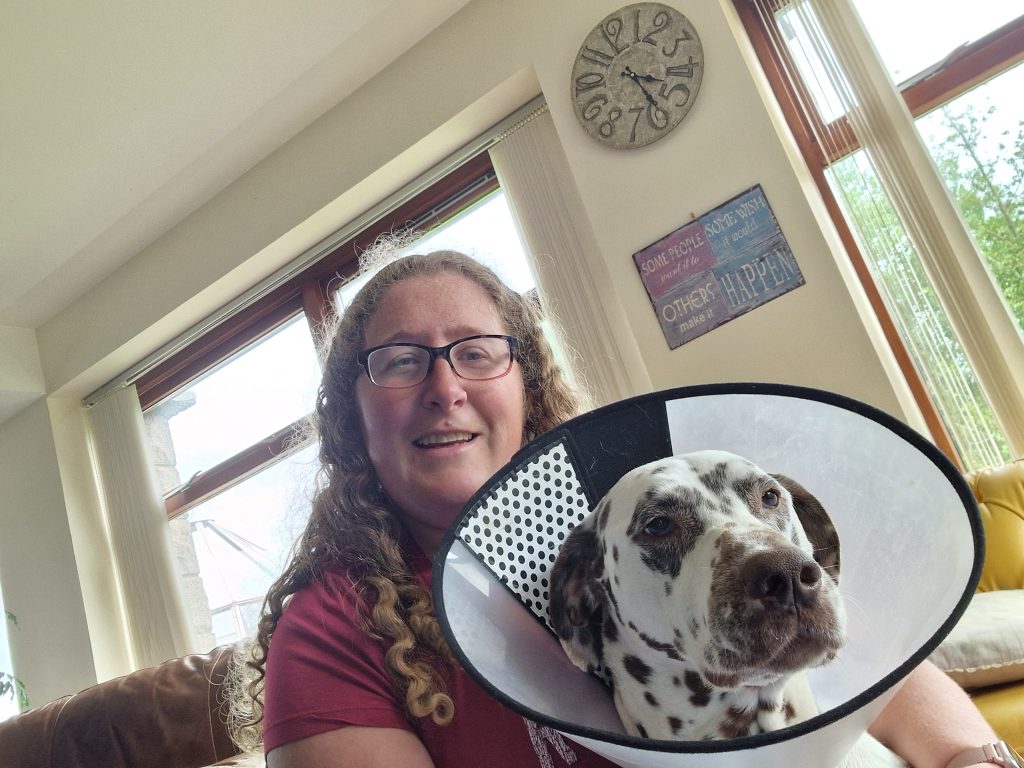Crate training is one of the best things you can do for your puppy, but it’s important to do it right. The crate should never be a place of punishment—it’s a safe space, like a cosy den, where your puppy can relax and feel secure. Some people worry that crate training is cruel, but when done properly, it helps puppies feel safe and prevents them from getting into trouble when you can’t supervise them.
All of my dogs are crate trained, and I have seen first-hand how beneficial it is. Dexter and Emba have crates in the house, where they love to relax, while Siri has the utility room as his bedroom, and Mungo prefers his outdoor kennel. Crate training is about finding the right balance for each dog’s individual needs.
Why Crate Training is Essential for a Happy, Well-Behaved Dog
A crate provides a sense of security and gives your puppy a dedicated space to rest. It also makes house training easier and keeps them from chewing on things they shouldn’t.
Beyond puppyhood, crate training remains beneficial throughout a dog’s life. It helps with:
Travelling Comfortably: A crate provides a familiar and safe space, reducing stress on trips or vet visits.
Speedy Vet Recovery: If your dog needs rest due to illness or surgery, a crate ensures they stay calm and comfortable.
Maintaining a Peaceful Household: When guests visit or during busy moments, a crate gives your dog a quiet space to retreat to.
Handling Emergencies: In cases of evacuation or temporary boarding, a crate-trained dog adapts much more easily.
Providing Long-Term Comfort: As your dog ages, they will appreciate having a consistent, familiar place to rest.
I’ve also found that crate training makes life easier for both dogs and owners. For example, Siri often demonstrates in my classes, and his crate is his go-to spot to relax when he’s not working.
Choosing the Perfect Crate Size for Ultimate Comfort
Picking the right size crate is crucial to your dog’s comfort. Your puppy should be able to stand up, turn around, and lie down fully stretched out. Dogs have natural sleeping positions—some like to curl up, while others sprawl out—so having the right-sized crate ensures they can rest in the way they find most comfortable.
If a crate is too big, your puppy may use one end as a toilet and the other for sleeping, which can make house training more difficult. If it’s too small, they won’t be able to settle properly. Some crates come with dividers, allowing you to adjust the size as your puppy grows.
Step-by-Step Guide to Crate Training Success
1. Start When Your Puppy is Ready for a Nap
Wait until your puppy is naturally tired. Ensure they’ve had a toilet break, then gently place them inside, close the door, and sit nearby. Your presence reassures them—read a book, watch TV, or work while they settle.
2. Night-time Crate Training for Peaceful Sleep
Keep the crate next to your bed at night. If your puppy stirs, reassure them softly or gently stroke them through the bars. This helps them feel safe and settle back to sleep. When they wake up, take them straight outside for a toilet break.
3. Gradually Increase Alone Time Without Anxiety
Once your puppy is comfortable in the crate, start moving around the room. Begin by making a cup of tea or stepping out briefly. Slowly increase the time spent out of sight to build their confidence.
4. Crate Training for a Calm and Well-Behaved Dog
A well-trained puppy sees the crate as a cosy retreat, making it easier for you to step out or do chores without worrying about destructive behaviours. They’ll be safe and secure instead of chewing wires or furniture!
5. Crate Training Beyond Puppyhood – A Lifelong Skill
Even adult dogs can be crate trained. With patience and consistency, older dogs can also learn to see the crate as a relaxing space. I have successfully trained older rescue dogs to chill out and see a crate as a portable bedroom.
Choosing the Right Crate for Your Dog’s Needs
You have two main options:
Metal crates: Sturdy and provide great airflow.
Soft fabric crates: Lightweight and portable, but not ideal for chewers.
For safety, always remove your puppy’s collar or harness before crating to prevent accidents. If a crate isn’t your style, a secure playpen can be a good alternative, though some puppies may try to climb out.
Need Extra Help? Find Puppy Training Classes Near You!
If you’re struggling with crate training or need guidance on puppy behaviours, a training class can be a game-changer. Wondering, Where can I find puppy training classes near me? You’re in luck! I offer in-person puppy training classes in DD10 (near Gourdon, Montrose, Scotland) and affordable online training so you can get expert help no matter where you are.
If you come to classes, you’ll see Siri, my demo dog, snoozing in the corner of the room in his crate, ready for when he is needed. I have used a crate with him since the day he came home at 8 weeks old, and he is now 9.

With over 15 years of experience in dog training, Laura Carter has dedicated her career to enhancing the bond between humans and their canine companions.
Based in Scotland, Laura lives with her twin daughters, four dogs, and a variety of other animals.
A member of the Institute of Modern Dog Trainers (IMDT) and a certified Scentwork UK instructor, Laura brings a wealth of knowledge and expertise to her work.
Her expertise in dog care and rehabilitation is showcased in the book The Vet Says Rest, a valuable resource for pet owners navigating their dogs’ recovery.
Laura also brought her passion for dogs to a wider audience as a trainer on Channel 4’s Superstar Dogs alongside John Barrowman.
Her work continues to inspire and support dog owners everywhere, helping them build happier, healthier relationships with their pets.